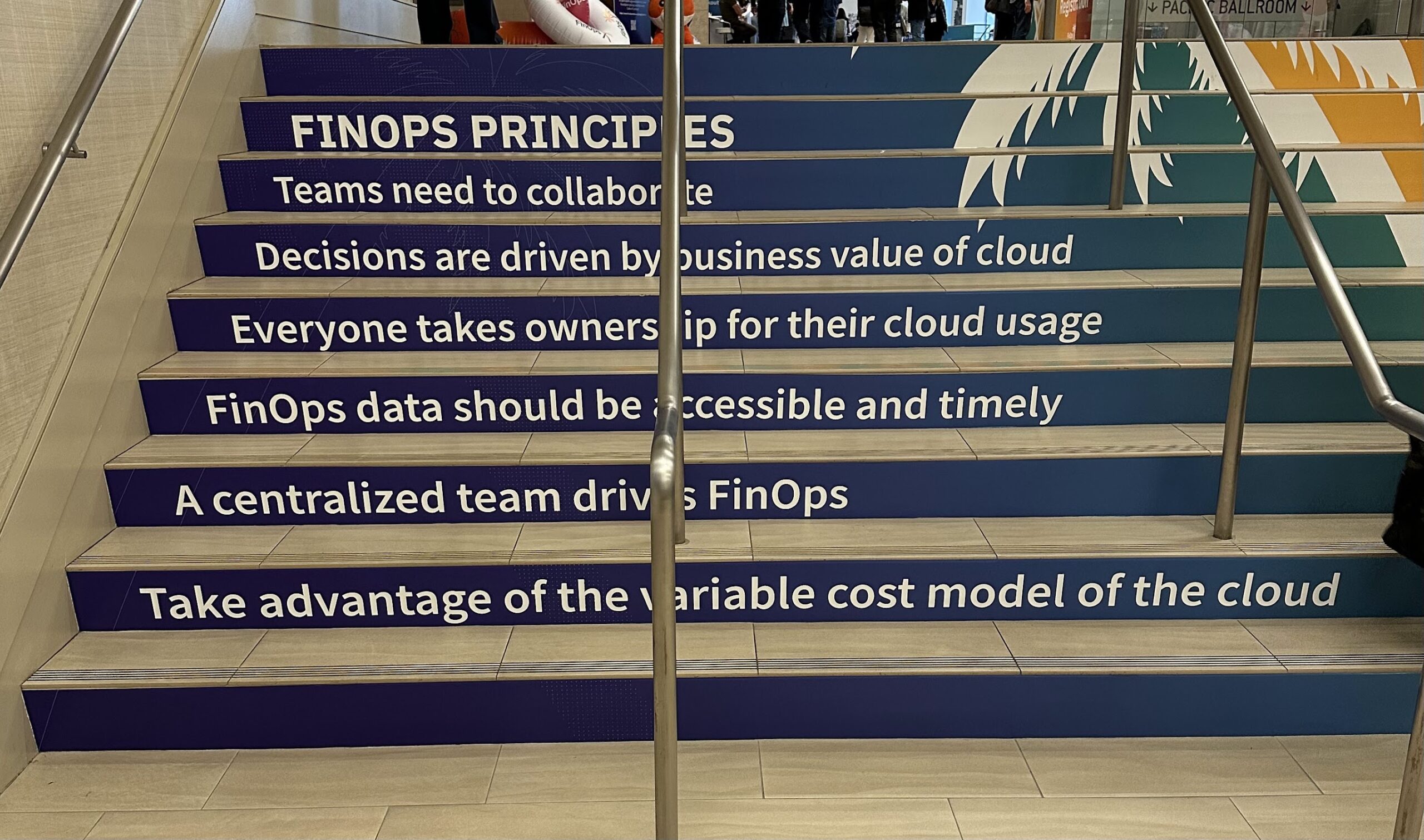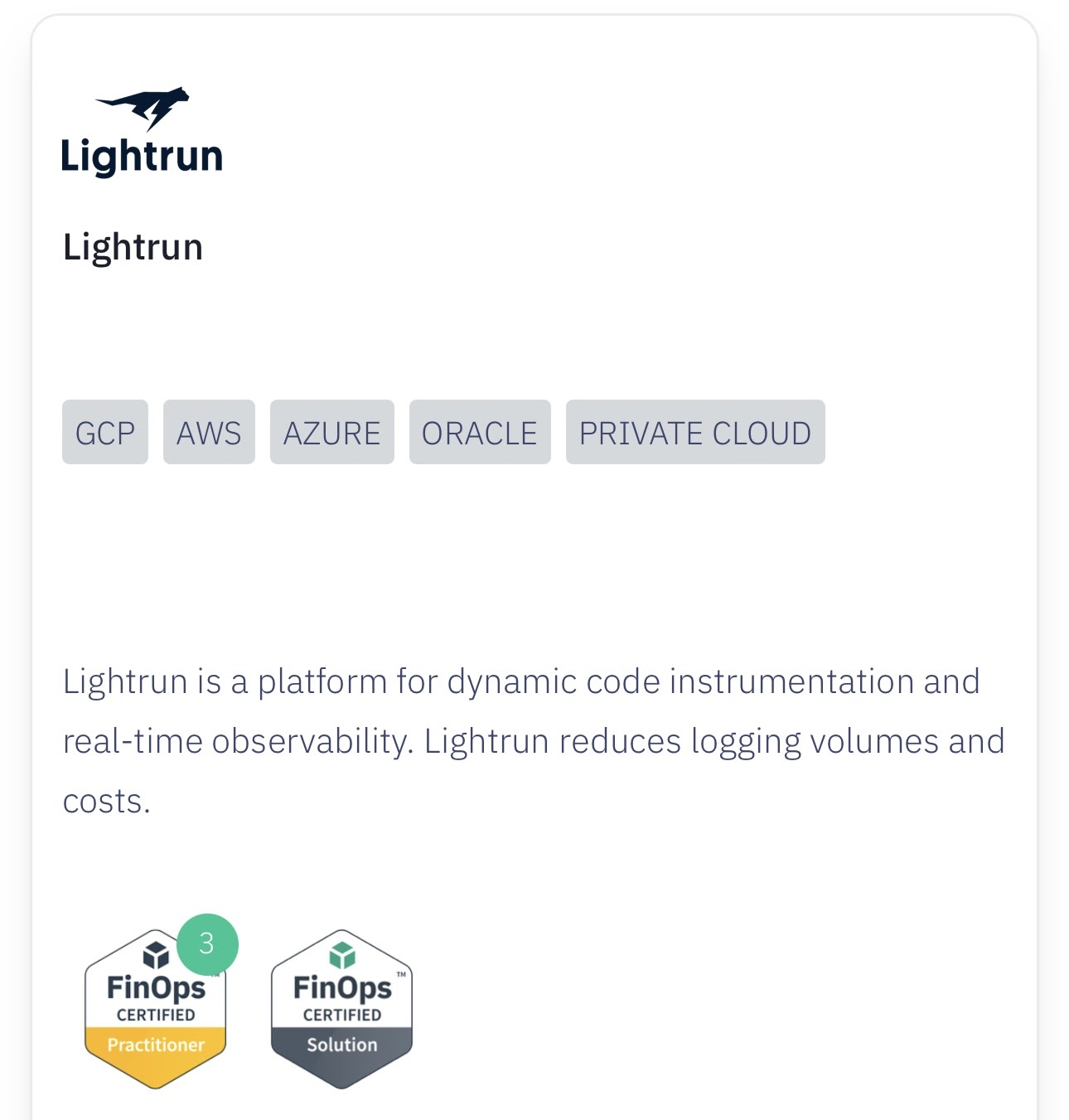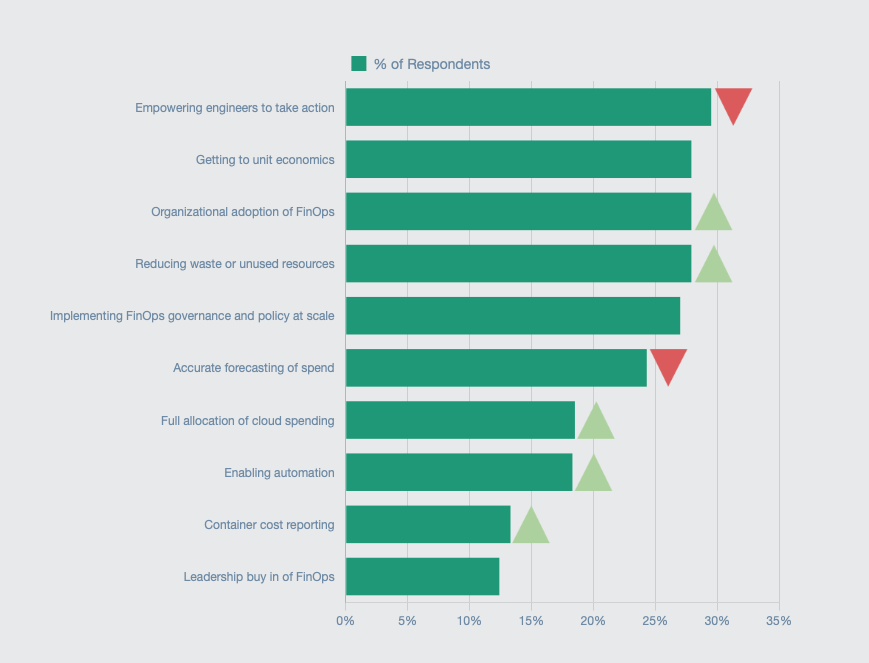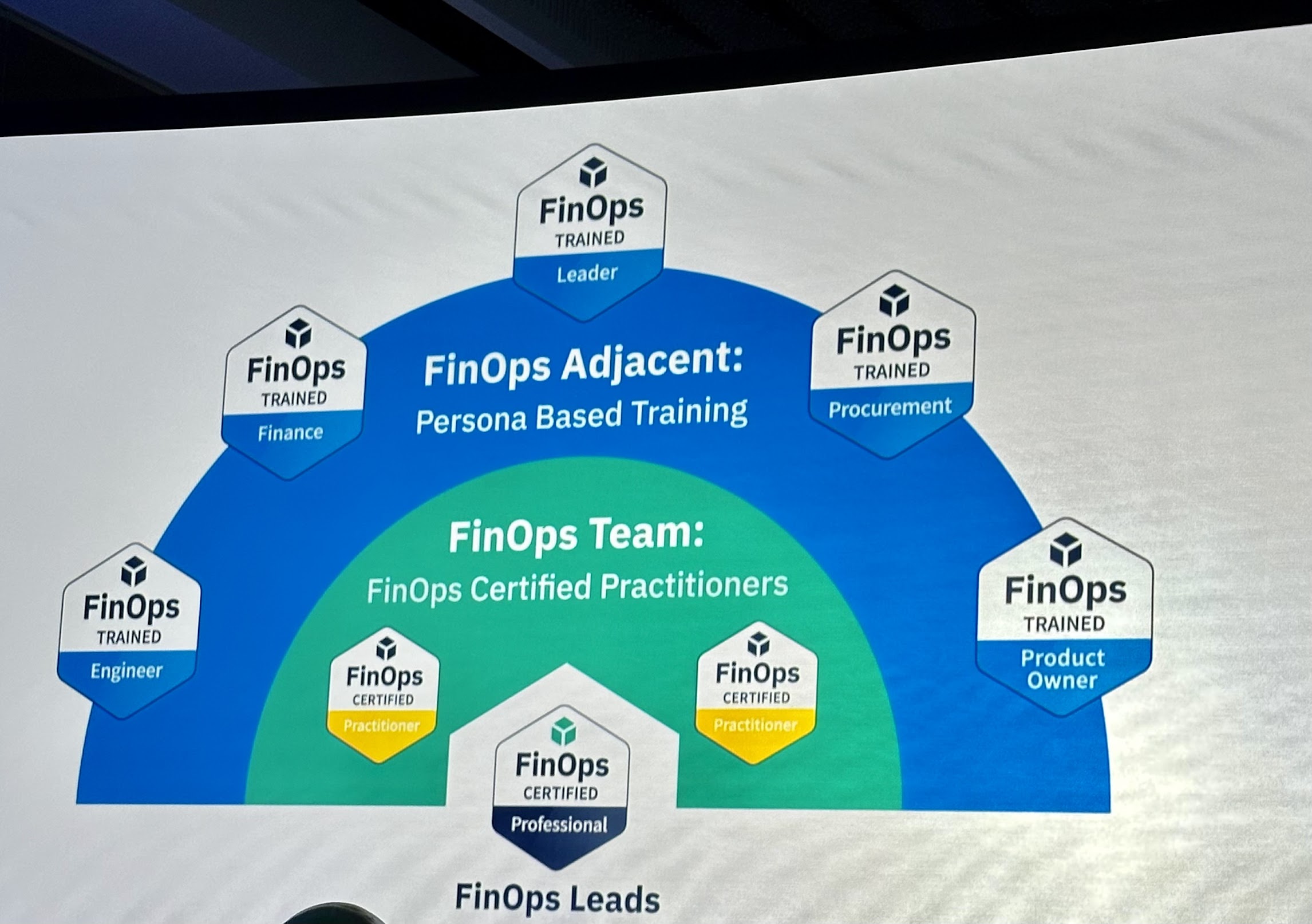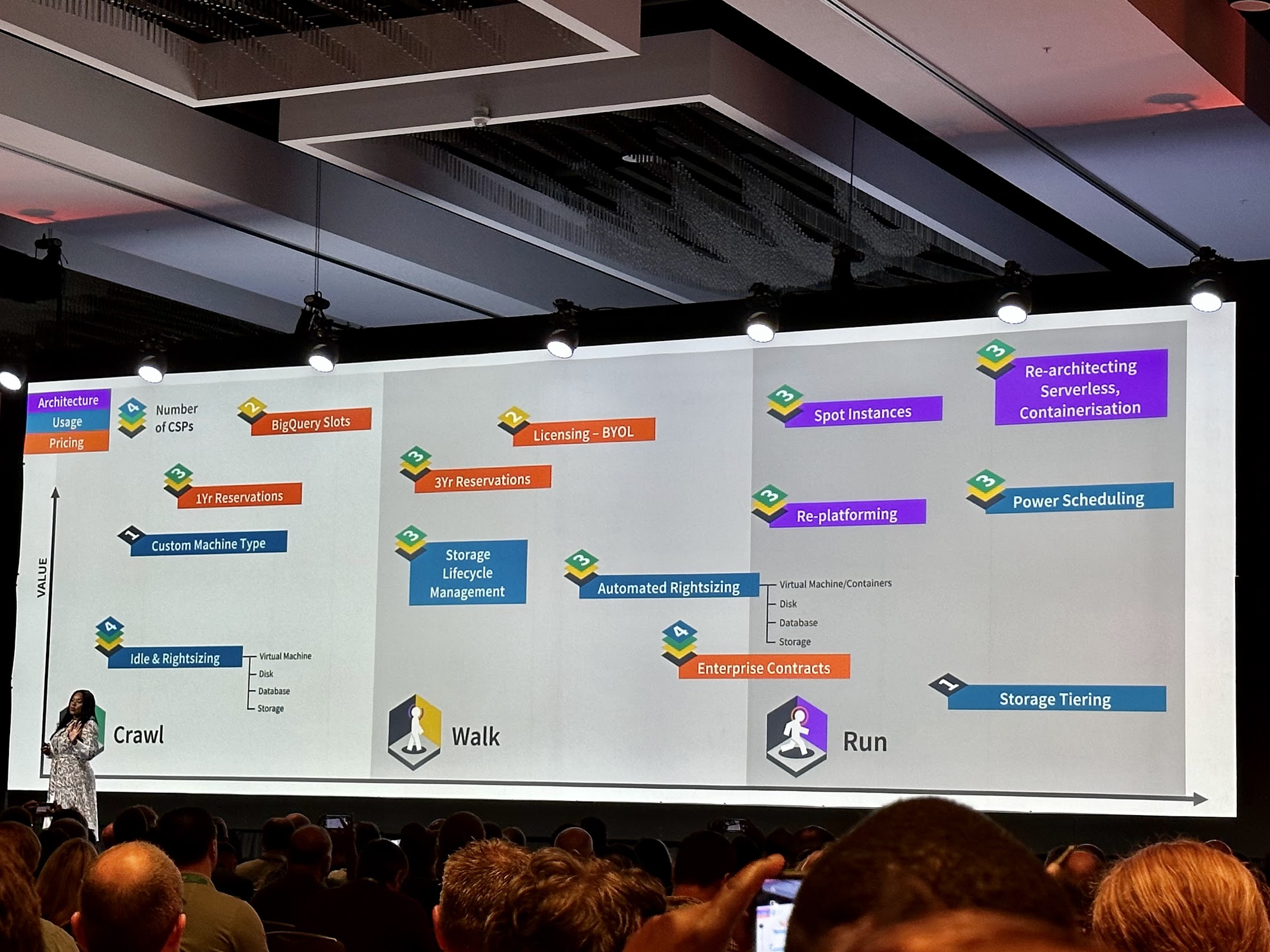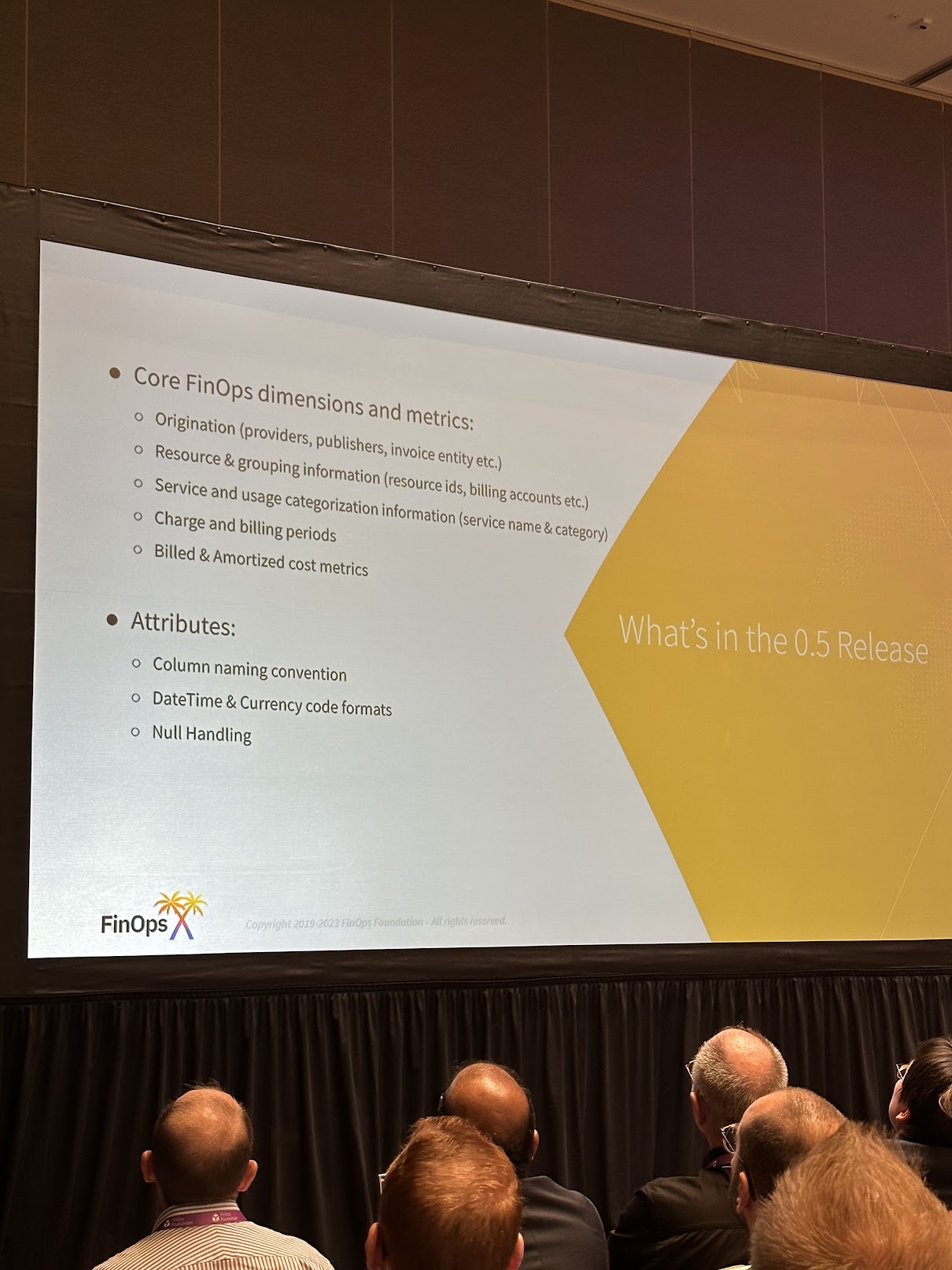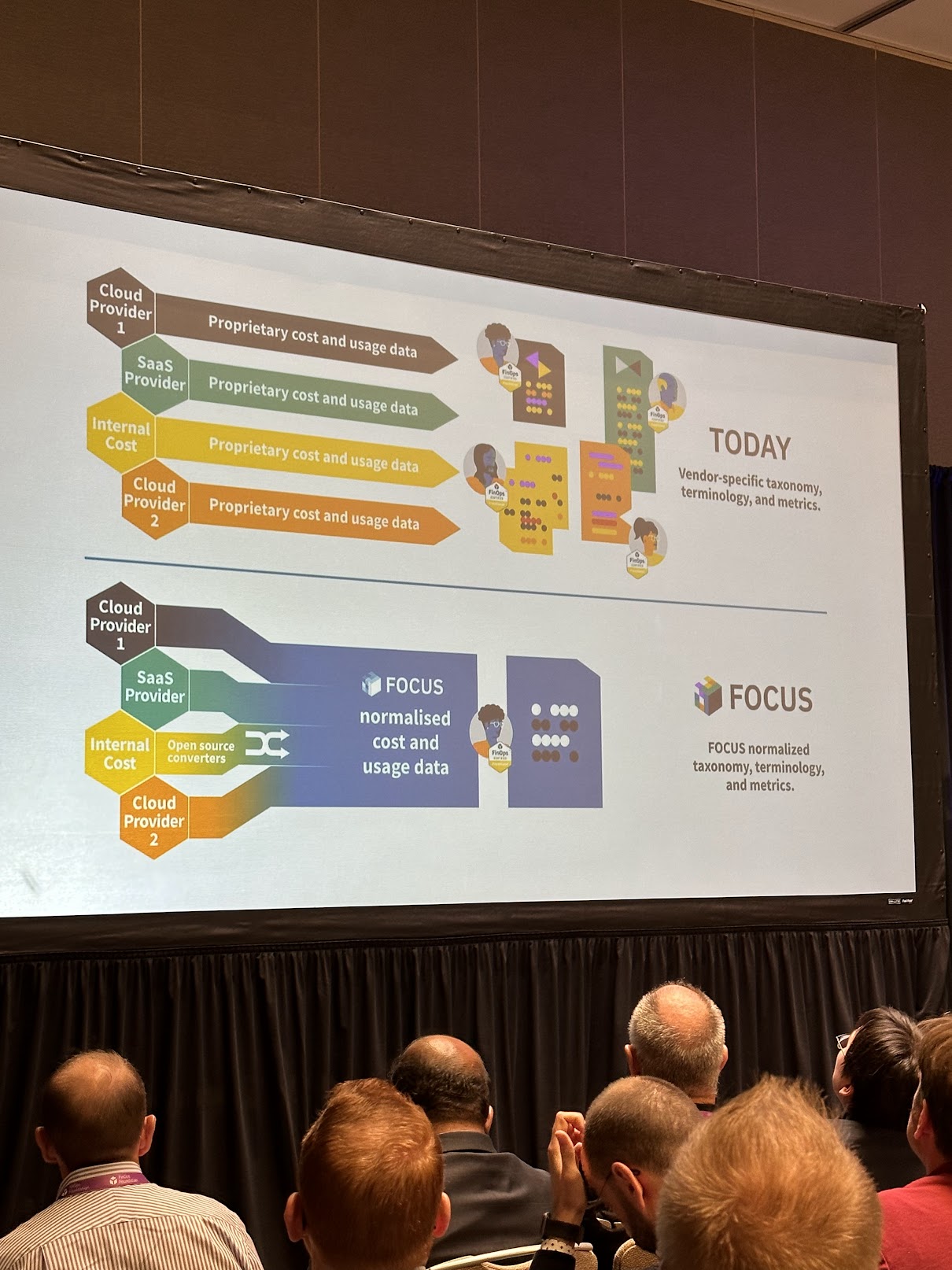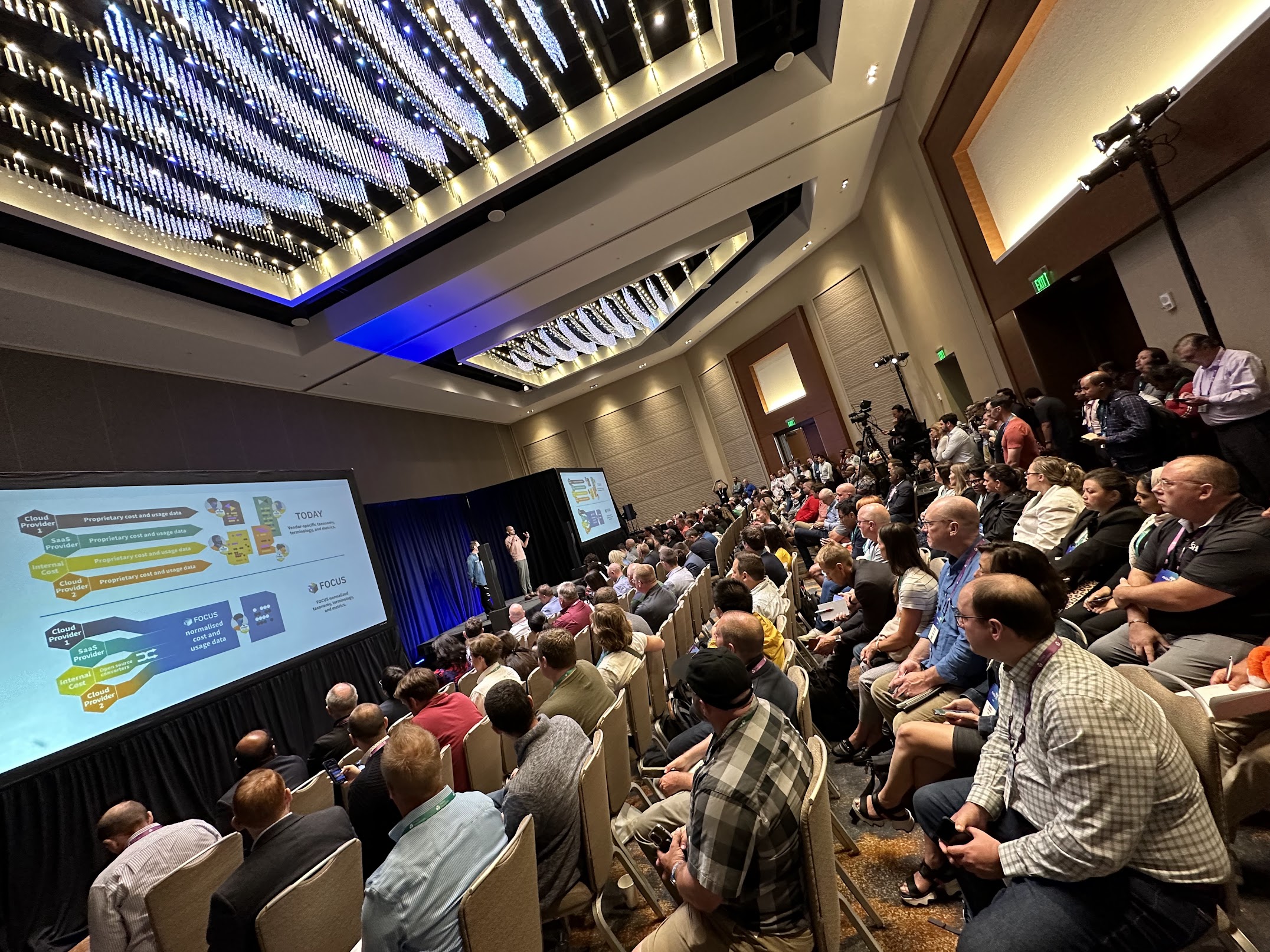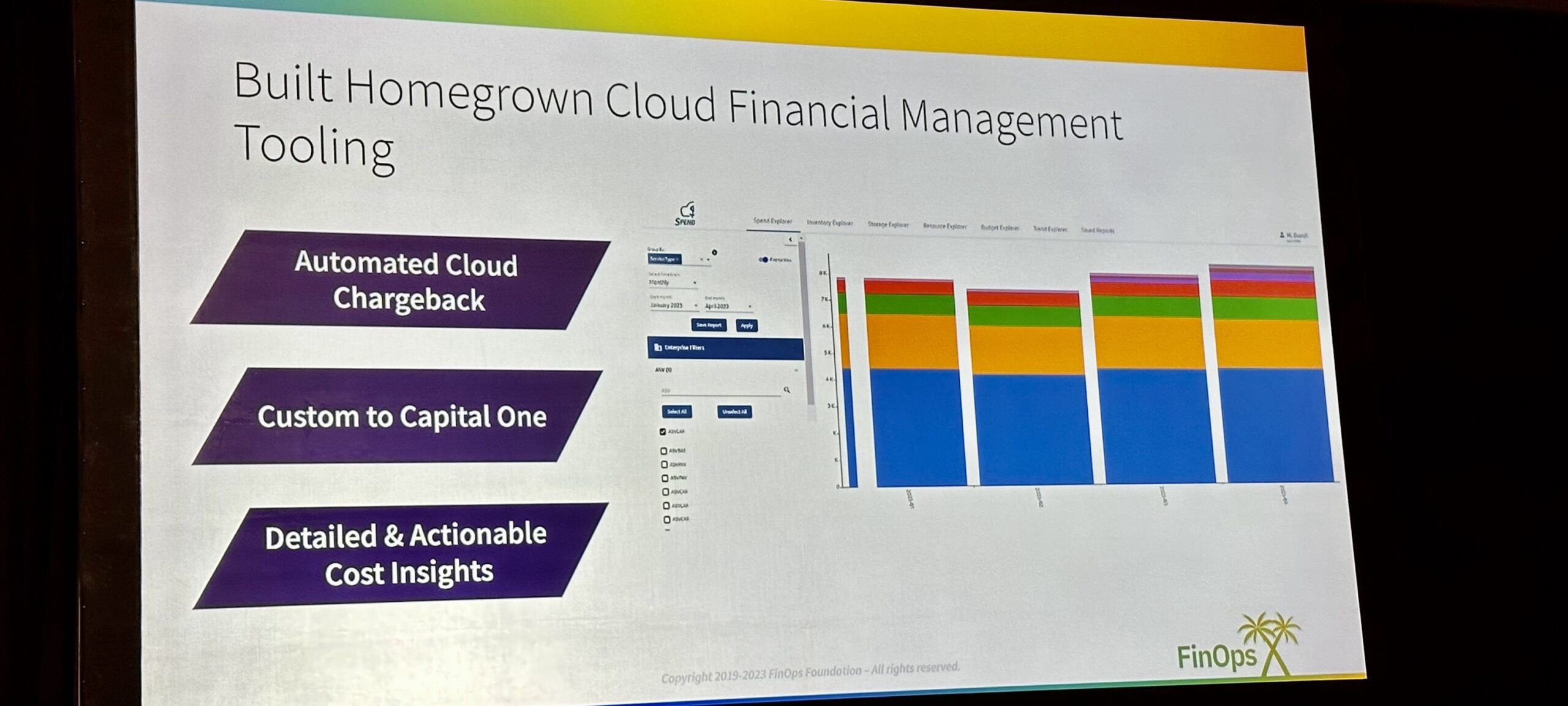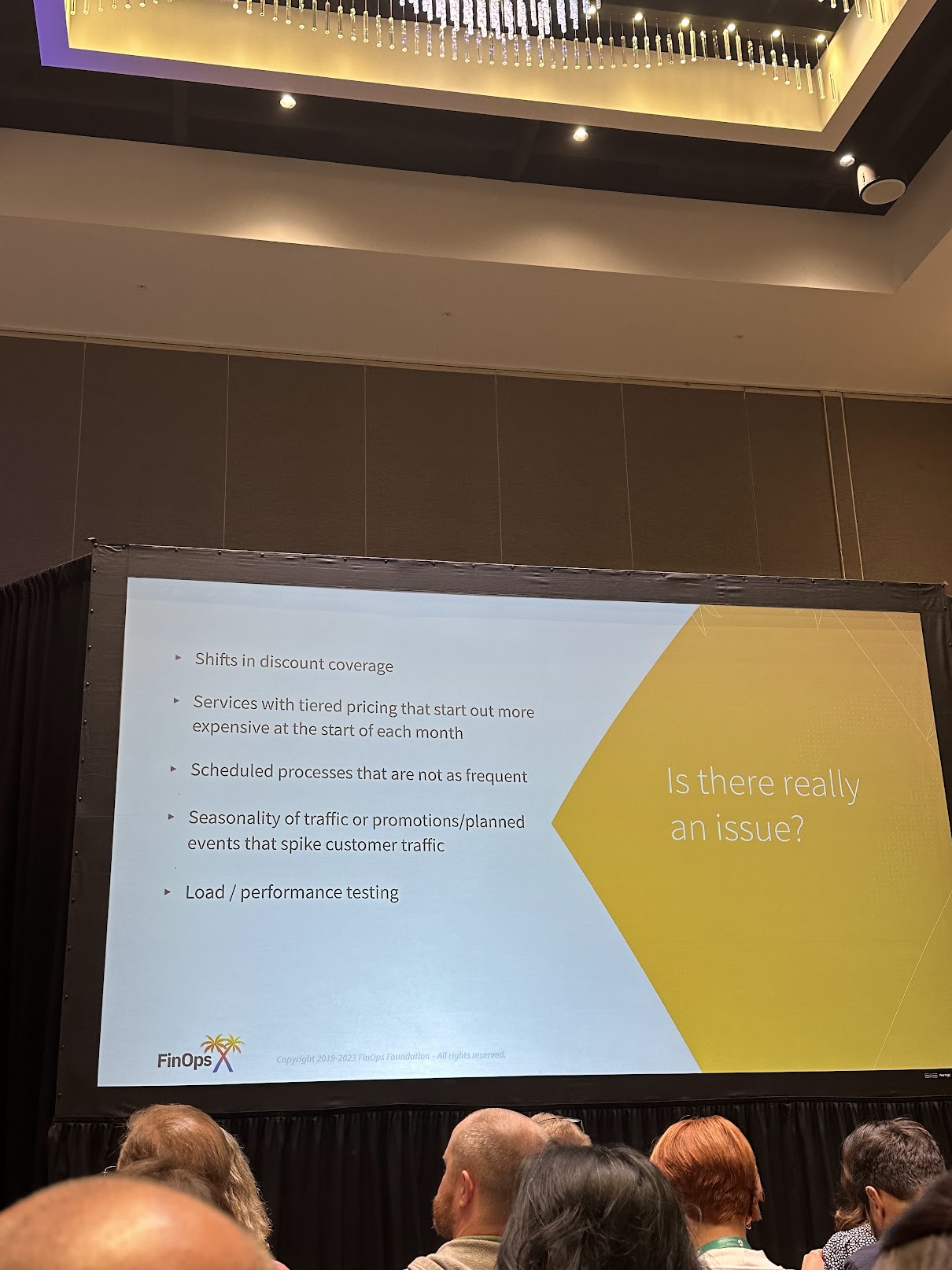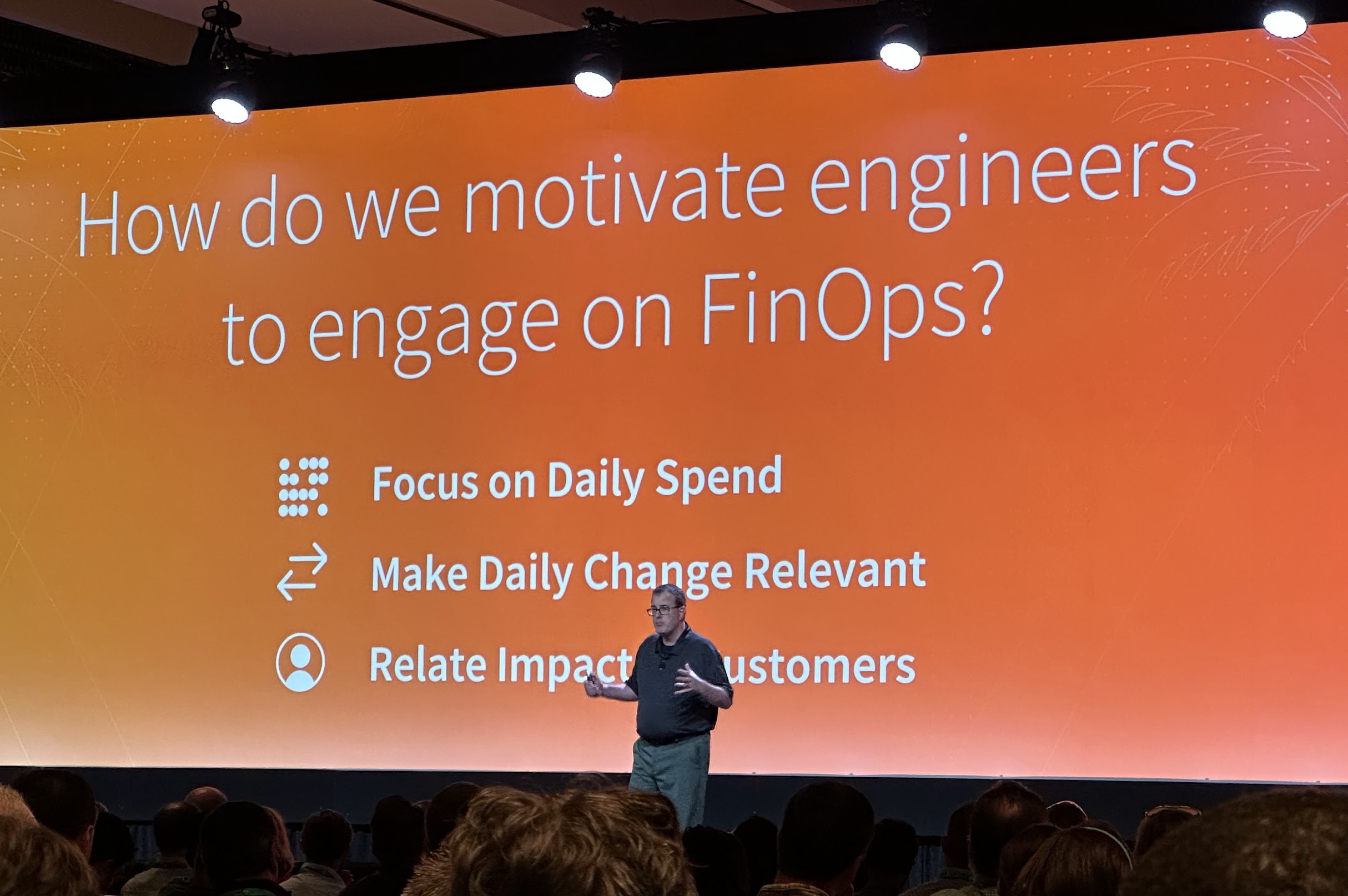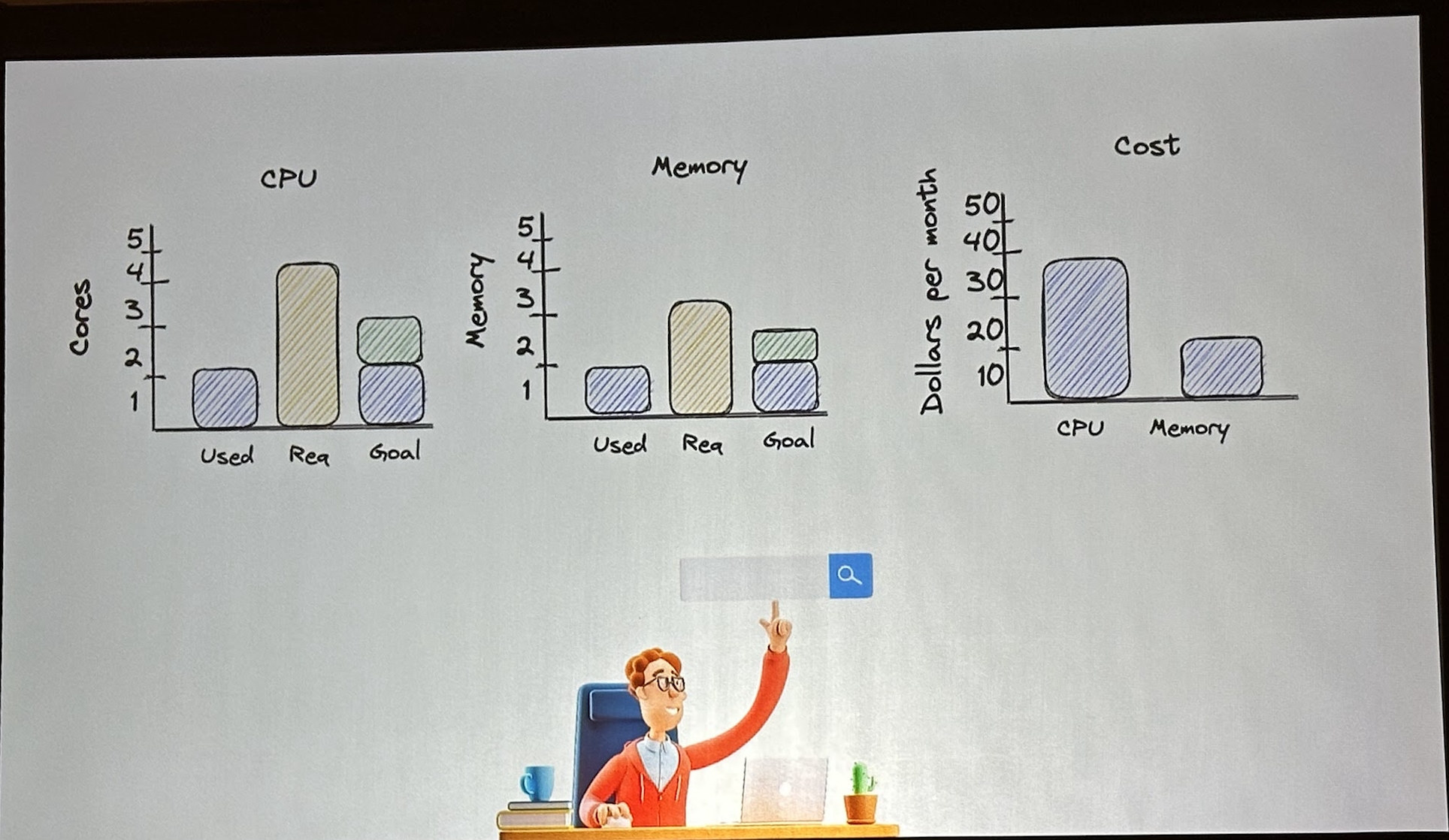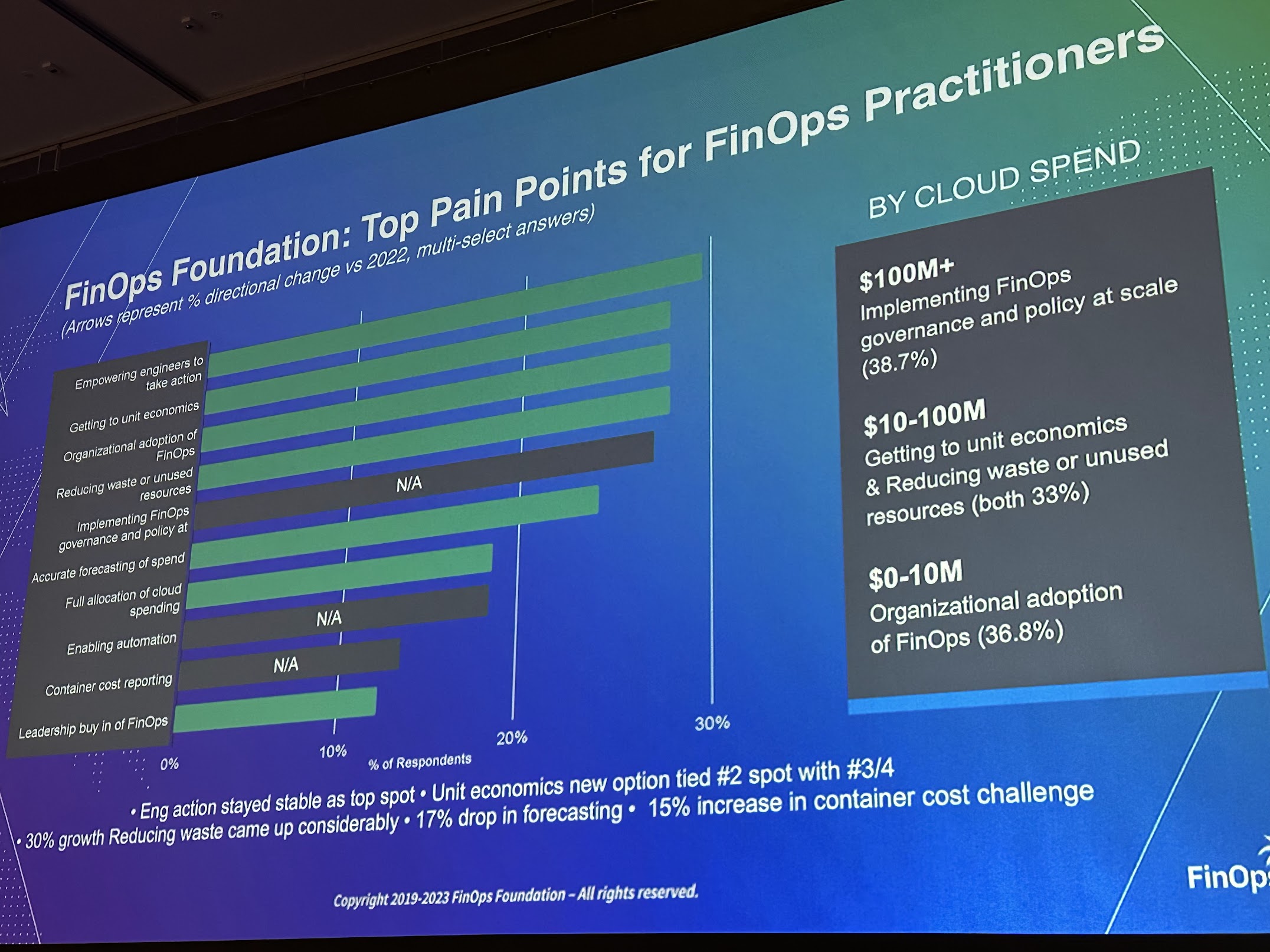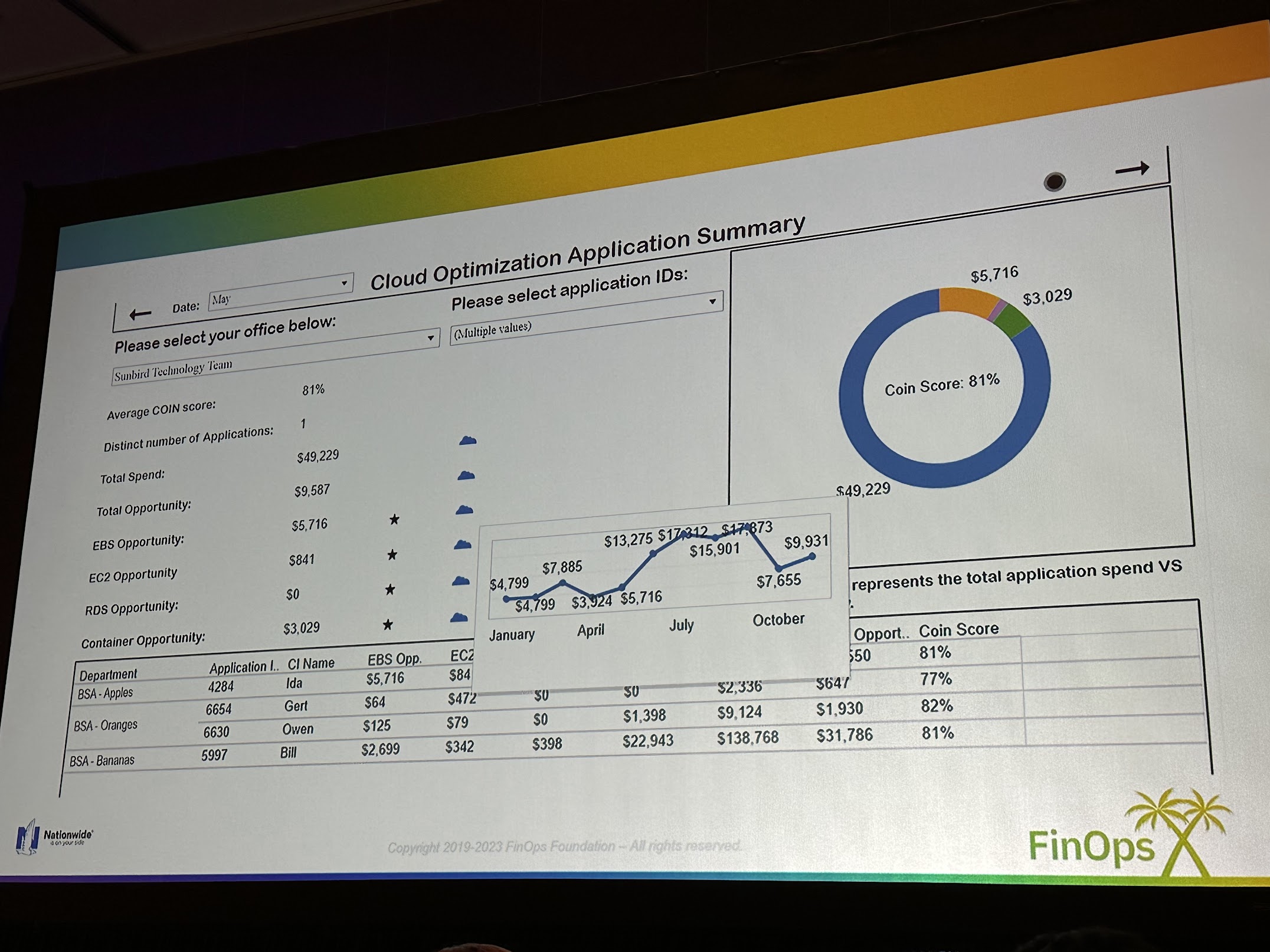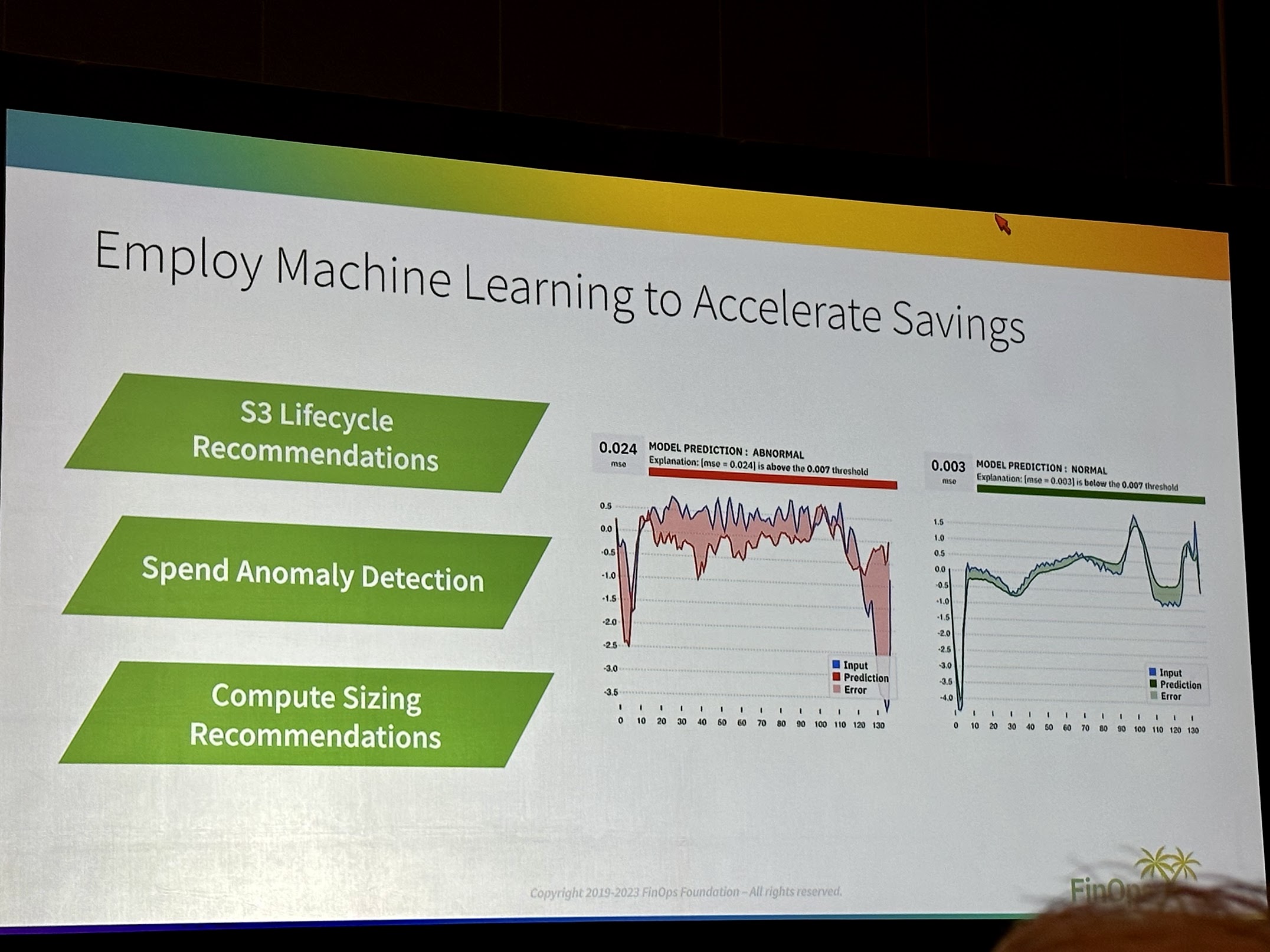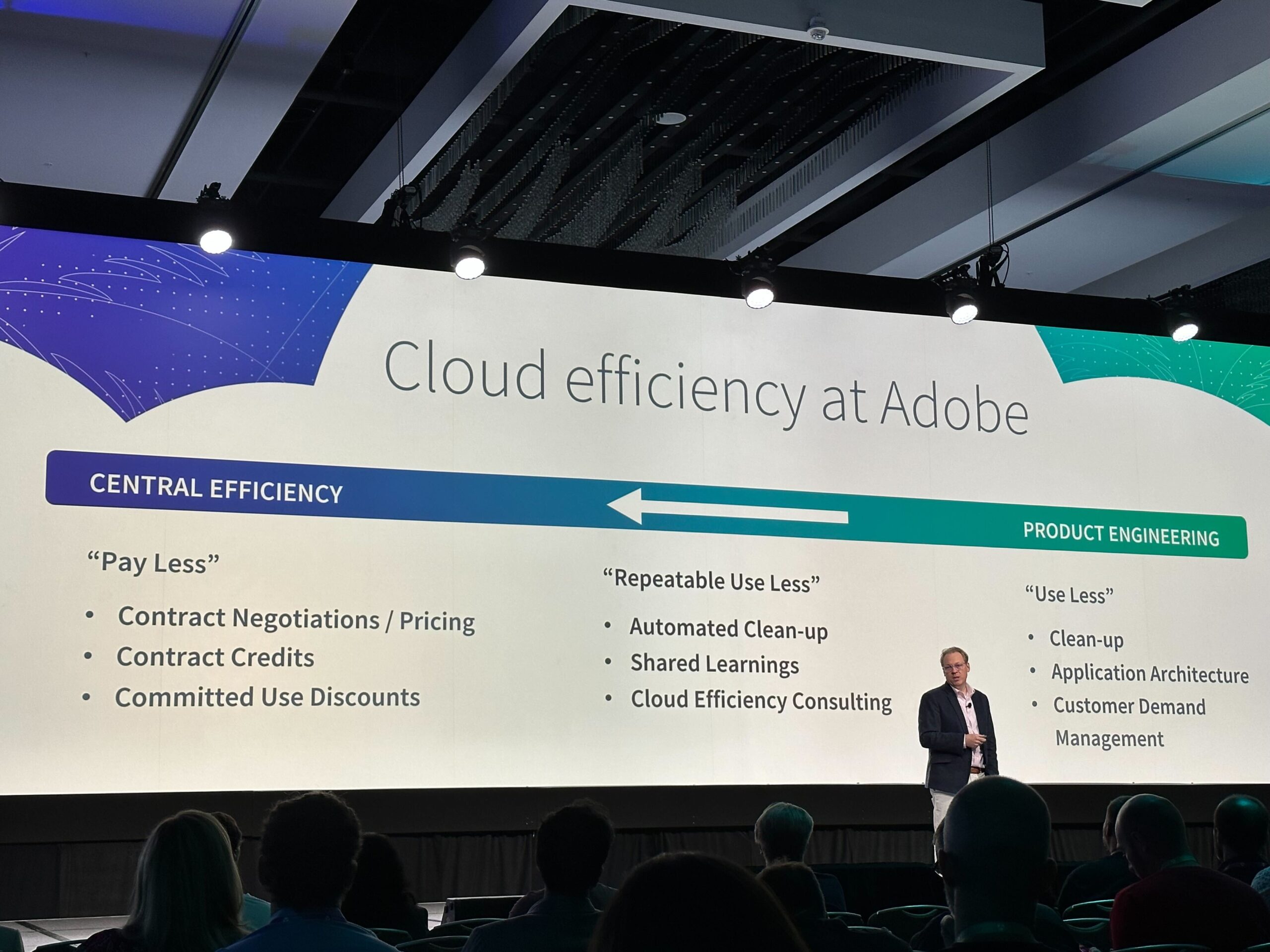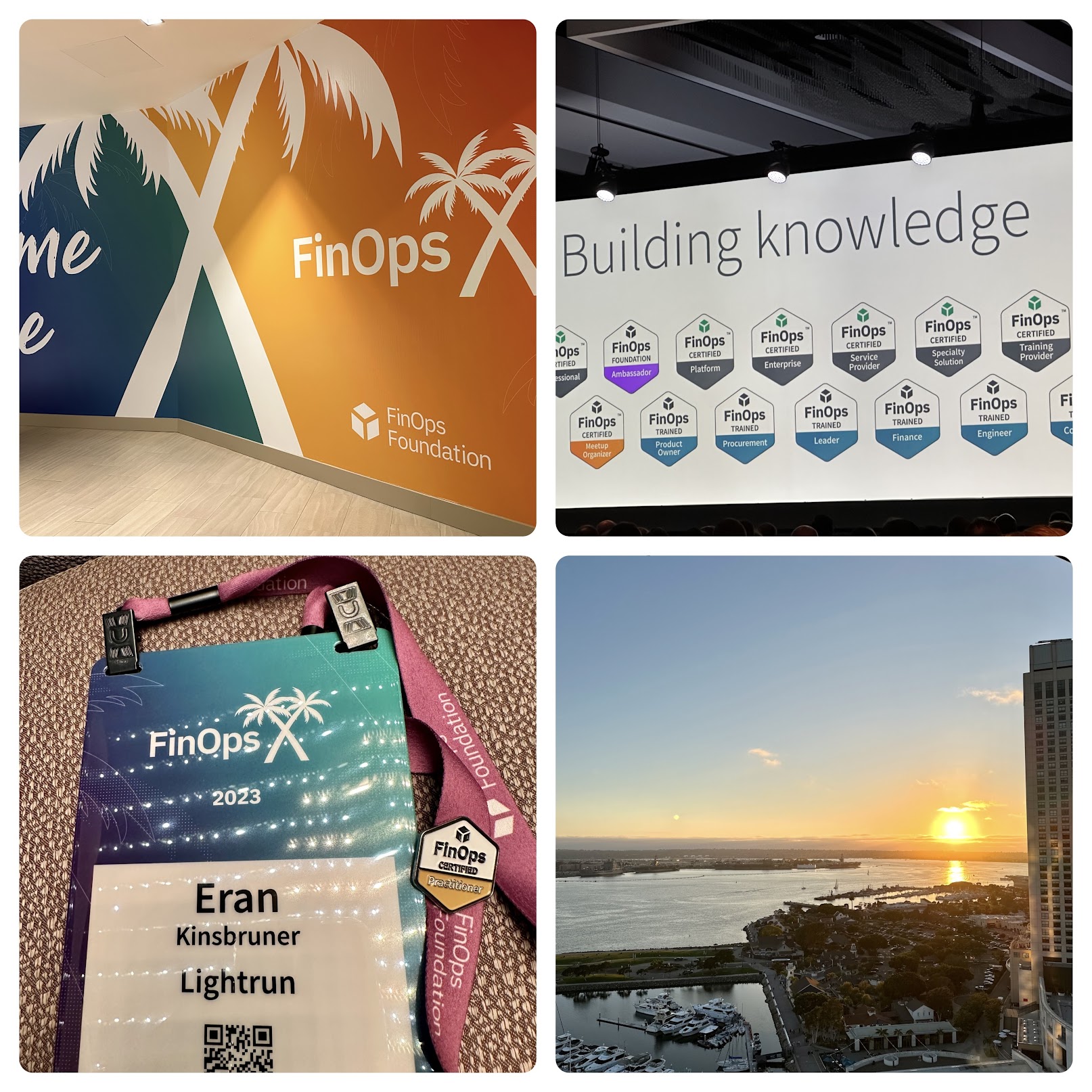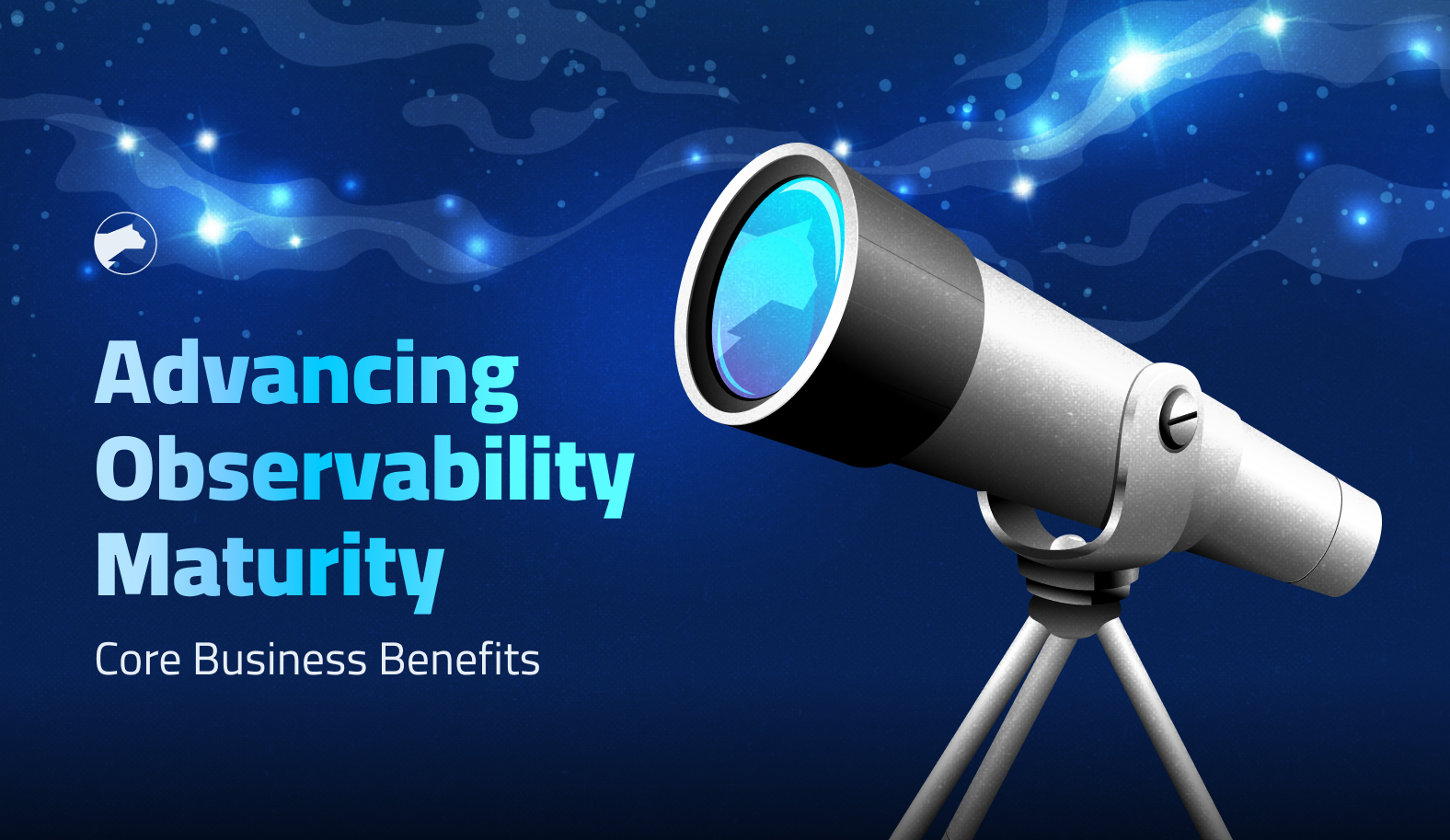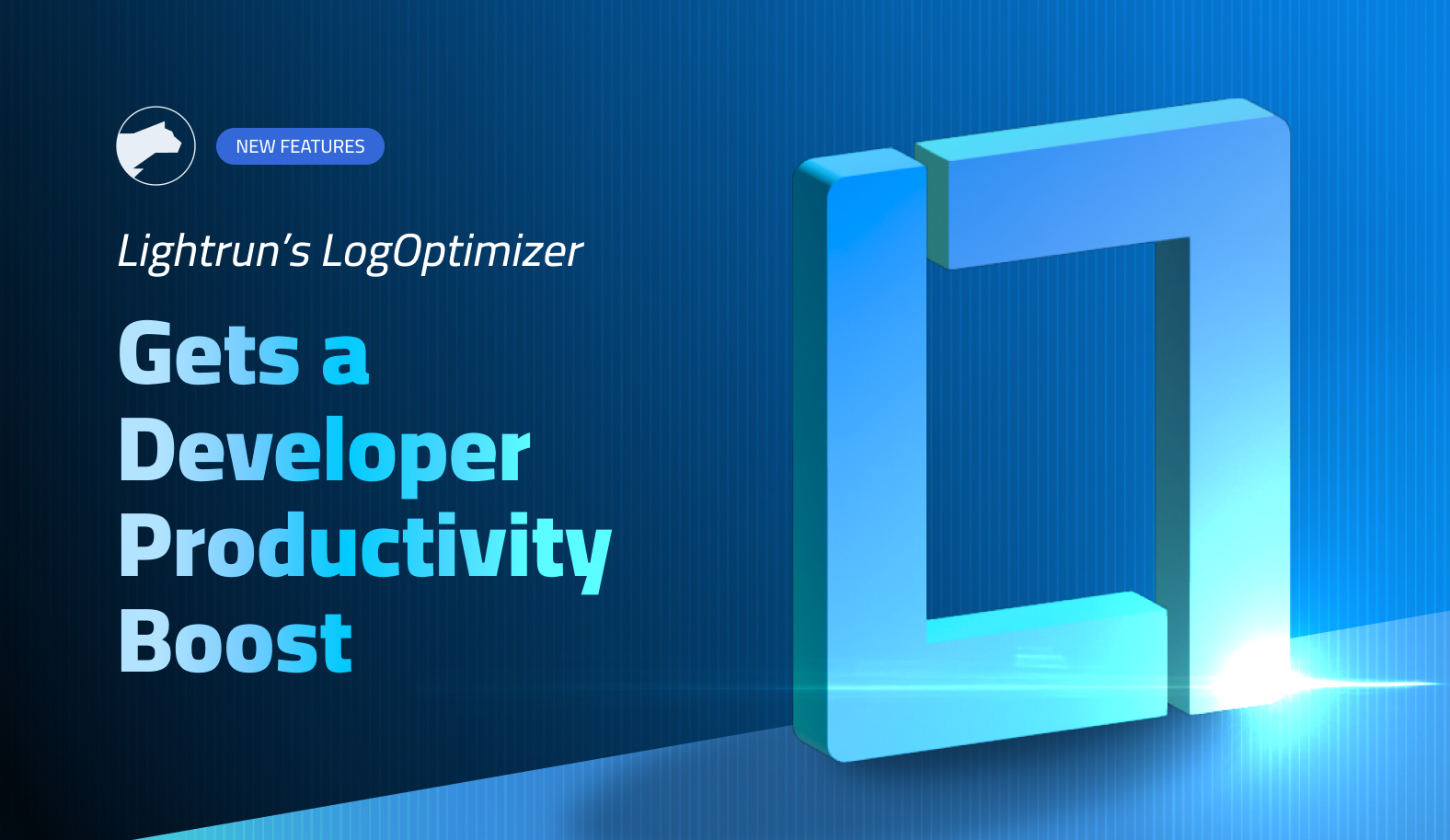

Lightrun Attendance at FinOps X 2023: Unveiling Key Insights, Highlights and Takeaways from the Show
Introduction
This week Lightrun attended the annual FinOps X event. The event was sold out and packed with great speakers, practitioners, and amazing atmosphere. Compared to last year which had over 300 attendees, this year the event brought over 1200!
Above is a screenshot taken from the venue entrance reminding the audience with the core principles of FinOps.
As a background, Lightrun is a FinOps Certified Solution dynamic observability platform that has 3 FinOps certified practitioners (Myself included :)), aiming to shift left FinOps to developers and optimize the overall spend earlier in the development lifecycle.
As emphasized in the recent state of FinOps report, a significant obstacle (29.5% of respondents) to the adoption and shift-left approach of FinOps is to enhance developers’ awareness and accountability regarding the cost of their software development, empowering them to take appropriate measures. Executives are increasingly recognizing the importance of cost awareness at various levels, such as feature development, tooling, and overall application development, prompting actions like cost sharing, spend optimization across departments, and more.
In this post, we summarize the key takeaways from this conference, share some notable facts taken from the main keynotes and breakout sessions, and put the spotlight on what’s going to shape the future of FinOps.
Key Takeaways and Highlights
As mentioned above, this year event attendance clearly proved that FinOps is becoming the common practice and language for business that are transforming their cloud usage and looking at ways to optimize their spending.
While there were dozens of sessions and chalk-talks, it was hard to capture all, so in this summary blog I’m covering on the top insights and sessions that I was able to attend and than stood up to me.
To begin with the event summary, a prominent theme echoed by FinOps ambassadors, vendors, and major cloud service providers like Google (represented by Mich Razon), Microsoft (represented by Fred Delombaerde), and Oracle (represented by Phil Newman) revolved around the primary goal of cost optimization through FinOps. This key message emphasized that every dollar saved during the process should be directed towards fostering future growth, driving innovation, and ultimately achieving business success.
High-Level Key Takeaways
- FinOps practice is emerging YoY with more organization adoption, and more practitioners getting certified
- FinOps success is attributed to the combination of Tools, People Skills, Communication, and Organizational Culture Shift
- Technology trends that are shaping and will continue to evolve FinOps maturity are related to the following:
- Automation , Automation , Automation – Across different practices, across teams, and via varying tools.
- Gen-AI and ML for better and more rigor data analysis at scale (more context around that is later in this blog)
- Collaboration between CSPs, vendors, and the FinOps Foundation is transforming FinOps and will reshape the future of FinOps landscape
- Shifting left FinOps and empowering developers to better own the cost per feature, CPU/Memory consumption optimization, and other cost related aspects earlier in the SDLC is key to drive success in maturing FinOps
- New open-source project Focus holds a great promise to breaking Siloes and creating a common ground from taxonomy, terminology and understanding of the various FinOps attributes coming from different sources
- While the FinOps framework evolves around the cycle of Inform, Optimize and Operate across the varying maturity levels of Crawl, Walk, and Run, the FinOps practice isn’t a one an done objective but rather a continuous effort that requires maintenance, investment, and optimization.
- FinOps is launching a new persona based training to more effectively provide training throughout the different organization department as well as re-classifying the FinOps landscape based on categories.
- Throughout the sessions there was a clear correlation between the FinOps practice and the term “Efficiency Engineering” – Many advance organizations look at FinOps adoption and maturity as a way to enhance their engineering organizations toward lowered costs that goes hand in hand with innovation and growth from a products perspective.
📢 Before diving deeper into the article, I wanted to share the below insight taken from the Keynote given by Natalie Daley from HSBC showed a best practice and recommendation around maturing FinOps via a crawl, walk, run approach divided into pricing, usage, and architecture categories. Natalie emphasized the continuous improvement that is required to succeed and advance the values and ROI from FinOps practices.
Spotlight on Event Themes at FinOps X 2023
There were many topics covered during the conference including the new FOCUS project launch, generative-AI and ML solutions to aid limitations or challenges with existing tools, automation of FinOps practices toward shifting FinOps left towards engineering in their early stage design and code development, and more. Below is an high level summary of these key themes.
Focus Project Launch !
📢 It started with the opening keynote and continued throughout the breakout sessions and chart talks – FOCUS is one of the next big things in FinOps practice formalization.
As shown in the picture below taken from the session from Udam Dewaraja (Chairperson Focus, FinOps Foundation) and Mike Fuller (FinOps Foundation CTO), the FinOps Foundation is moving forward with an open-source initiative that aims to standardize the taxonomy, metrics, and terminology across all cloud computing solutions: CSPs, SaaS providers, and other vendors that contribute to the overall cloud spending. The end goal is to have a single language with a clear pane of glass to measure, monitor, and optimize cloud cost so all different personas are aligned and informed and can take data-driven smart decisions.
The above highlighted Version 0.5 of the FOCUS specification with support from preliminary vendors and contributors is available, and the team is currently working on version 1.0 which will include more standardization and additional contributions from the community.
Based on the full room of attendees, it is clear that there is both interest and need in the market for such standardization, and the next year would be fundamental to the growth of the spec and its adoption.
At FinOps X 2024, it would be very interesting to measure the journey of this new and exciting project and its outcomes.
Shift Left FinOps Practices Automation
Both tool providers that were exhibiting (e.g. FinOut) in the show as well as dedicated breakout sessions (Capital One) clearly covered the investment in FinOps automation to better drive adoption, awareness, and accountability to cloud spending.
📢 The above screenshot taken from the Capital One session (Brent Segner and David Cahan) is only one of many examples for initiatives led by organizations to bridge gaps between siloed teams via precise data. Below is another example taken from Under Armour where Amy Ashby was covering anomalies and use cases where better communication combined with tooling and automation can save a lot of time and money and mature the entire level of FinOps within the organization.
As highlighted in the above anomalies, there are often spikes in costs that are shown in the reports, however, not every spike needs to be causing panic. For example, when running load and performance testing against a given environment there would obviously be spikes in the system as well as when the cloud spending model is based on consumption, hence, at the beginning of the month the pricing is high but than it decreases. It all comes down to transparency, visibility, data accuracy and most important – communication and tooling.
📢 Another great session with extremely important insights came from Walmart Global Tech where Tim O’brien covered the journey his organization underwent as they built and matured FinOps, especially focusing on engineering team adoption and shifting it left with automation.
📢 Complementing the above sessions was a great session from Target Corporation led by Kim Wier and Ron Tatro. They discussed the concept of FinOps as a Product and how using cultural shifts, technology and automation they are able to shift left FinOps, drive accountability and reduce costs.
📢 A phenomenal session led by Benjamin Coles from Apple showed the journey Apple engineering took towards optimizing their spend through tooling, communication, and by tackling the common FInOps challenges one by one as can be seen in the below screenshot.
In addition to the above, Benjamin highlighted the below reports and dashboard showing weekly, monthly and YoY cloud spend across the various hierarchies (development, testing, production, etc.) and covered the way Apple is looking to optimize CPU utilization as a way to reduce overall cloud spending.
📢 Lastly, Julia Harvey and Andrea Ratliff from Nationwide presented their homegrown built COIN which is an Index for cloud cost optimization that allows better visibility (underutilized compute, idle resources and more), forecasting and cost alignment within the huge organization of Nationwide. Specifically it provides executives with an Index-Based list of opportunities for optimization with the ability to then drill down into the resources level data for further action.
Generative-AI and Machine Learning within FinOps Practice
It was clear during the show that Gen-AI and ML are reshaping the entire technology stack and FinOps is yet another focus area for vendors (e.g. CoreStack) to enhance and maximize the outcomes of their tools. As teams struggle to optimize their cloud spending and are basing their decision making on data analysis across tools, cloud providers, and their own internal processes, artificial intelligence becomes instrumental for resilient, reliable, and scalable outputs.
The use of AI was featured both in the Capital One breakout session as part of the internal tool stack that the tech bank is building and maintaining as part of the FinOps category, as well as in other sessions such as the CSPs panel discussion.
It was evident that to mature FinOps practices, one of the advancements should be around empowering developers to be aware of the costs per feature, user, and customers so they can make the right balance throughout the SDLC for business profitability. In FinOps it is referred to as unit economics and the action is measuring the unit costs to understand business growth.
📢 Another 2 sessions surrounding AI where quite inspirational coming from Microsoft and Adobe.
- Microsoft introduced its new AI based cloud cost optimization solution that should allow organizations to monitor, analyze, and optimize their cloud costs through Gen-AI capabilities, chatbots with Q&A abilities tailored to cost optimization and rightsizing.
- Adobe introduced their recent AI solution named FireFly that similarly has the abilities to analyze and optimize cloud costs and bridge the gaps between product engineering and central efficiency departments.
The Future of FinOps
So, where is FinOps heading? As highlighted throughout the article, there are few key themes and investment areas where we should expect to see FinOps transforming and growing.
- More tools and open-source initiatives to drive consistent language and alignment between internal department within organizations such as the new FOCUS project.
- More Investment from CSPs in FinOps solutions – It is clear that it is a common interest across all leading CSPs to be part of the FinOps community and contribute to its success. We already start to see as listed above few new solutions coming from both Google and Microsoft that involve AI and other advanced capabilities to lead the adoption of the FinOps framework.
- Gen-AI and Smarter FinOps Practices – this cannot be more evident after the show. Each major vendor is looking at embedding AI capabilities into his solution to boost the value and grow the reliability and scale.
- Investment in community and training will continue to grow with more certifications, programs, and events that will bring together all levels of practitioners towards success.
Concluding Thoughts
This event was phenomenal, very well arranged and with awesome keynotes, panel discussions, and breakout sessions.
Cannot wait to see what the future of FinOps will look like, but it is sure heading towards the right way with the above mentioned focus areas.
Here at Lightrun we seek ways to further optimize remote and distributed workload software development and debugging costs as we did with the recent launch of the LogOptimizer, and we plan on doubling down on more advancements that are dev focused to support the shift left of FinOps.
Until next year …. A big thank you to the FinOps Foundation/Linux Foundation for setting up such a great and insightful event!
See you next year
It’s Really not that Complicated.
You can actually understand what’s going on inside your live applications.


